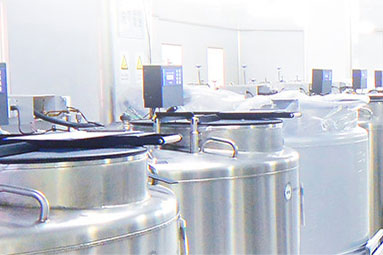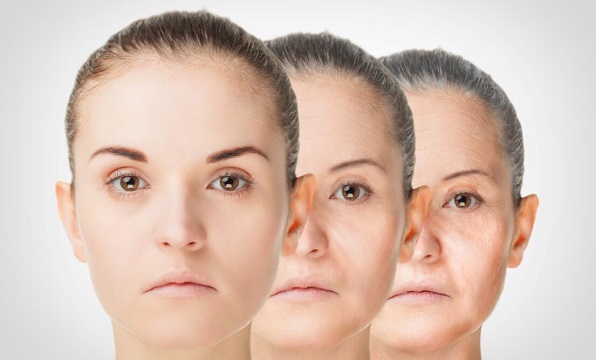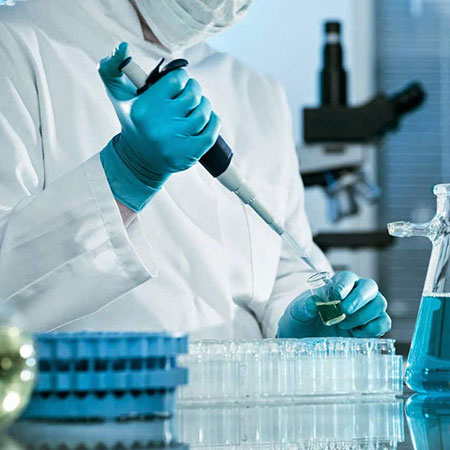- Email:[email protected]
- Tel: (852)51044851
-
How to make a veal of it
In 2008, the American animal rights organisation People for the Ethical Treatment of Animals (Peta) announced a US$1million reward to anyone who could use chicken cells to develop a marketable lab-grown meat by June this year. The contest deadline has been extended to January 1next year because no one has succeeded as yet. But scientists are getting closer to producing the first test tube chicken nugget. According to Peta, “some promising steps have been made towards this technology, but we’re still several years away from having in vitro meat being available to the general public”. Over the years there have been many attempts to create meat substitutes to please both vegans and animal rights activists. Many involve soy protein (such as Tofurky roasts and Soyrizo breakfast burritos) or wheat-gluten (such as Seitan gyros), or a combination of both. But Peta’s latest project is no meat substitute. We’re talking real meat and flesh, but produced in a lab, using animal stem cells placed in a medium to grow and reproduce. No killing involved. The Netherlands has beenleading the way in research. Stem cell scientist Dr Mark Post, from Maastricht University, expects to unveil the first-ever taste test of an in vitro hamburger next month – albeit at an expected initial price of ¤250,000 (HK$2.5 million). Some biologists warn that cell culture is expensive and technically difficult. But others believe costs will fall to mass-market prices once the technology becomes more common. Benjamin Wang, managing director of the Hongkong Stem Cell Centre, says: “In vitro meat could replace traditional meats in the future if it proves to be energy efficient. Specifically on a large scale, if we are committed to this research, I think it is very likely to be able to provide a new source of food.” Consuming lab-grown meat won’t have any more adverse effects on human health than real meat, according to Jason Matheny, founder of New Harvest, an organisation which is devoted to advancing technologies for new meat substitutes. Our goal is to develop a vegetable surrogate for meat that is both juicy and fibrous FLORIAN WILD, RESEARCHER, EU LIKEMEAT PROJECT “Cultured meat is made of the same stuff that real meat is made of. But in principle one could make it much healthier by controlling the amount and type of fat,” he says. In vitro meat is also more eco-friendly and less costly to produce than traditional…
[Read More] -
Inside Out – How stem cells can heal
Stem cells are part of the new age of medicine. Even if it had its beginnings centuries ago, today, because of advanced technology, its full potential can be powerfully and easily harnessed. What is the intrinsic nature of a stem cell? There are three types: Fertilized egg or germ cell. This has the potential to lead to the total and complete formation of an entire organism. Also referred to as Totipotent (all potential), it can become any cell type of the body. Pluripotent. This has the potential to become virtually any cell type except a germ cell. Embryonic stem cells (ESC) are traditionally called pluripotent stem cells. Multipotent. These are stem cells that are tissue specific, which have less self-renewal ability than the pluripotent variety. But this again is like going through the history of stem cells. This was the general thinking then. But now, medicine is changing in the way it views life. Why? Because recent studies have since shown strong evidence of something amazing. Adult stem cells (ASC) were once generally considered multipotent. But today, there is reason to believe that adult stem cells have pluripotent and totipotent capabilities. Therefore, is science expanding in knowledge, or is this proof that our bodies are evolving, adapting, surviving and even surpassing our own limitations? The breaking news is this: adult stem cells were identified that appear even more primitive or pluripotent than embryonic stem cells. Translation: A person’s very own stem cells can be harvested, stored and reintroduced into the body in strategic organs or tissues via injection. Another approach is to support the release of stem cells from the bone marrow. The use of adult stem cells transcends and bypasses all ethical boundaries facing embryonic stem cell research and approaches. ‘Stemness’ Is there a “stemness” of a cell? The answer is yes. This is the ability of a cell to divide through generations without losing its pluripotentiality. In short, a 50th-generation cell will be identical to the very first cell of the first generation. ESC has been studied for many years, but only in 1998 were ESC grown successfully in vitro. James Thomson succeeded where many had failed. For several years, he worked to develop a culture media for primate stem cells. He grew human ESC in a primate culture. But this spurred a series of questions. 1) Because ESC can become any cell type, could this be injected…
[Read More] -
Letter: Adult stem-cell research is future of science
The awarding of this year’s Nobel Prize in medicine to John Gurdon and Shinya Yamanaka for their pioneer adult stem-cell research has been held as both beautiful and ethical. This prestigious award should encourage institutions to switch funding from embryonic stem-cell research to adult stem-cell research which is more effective and without moral controversy. The awarding of the Nobel Prize in physiology or medicine to these two pioneers represents an important milestone in recognizing the superior potential of adult stem-cell research over the unethical, destructive experimentation on human embryonic stem-cells. In the past years, the attempts to clone human embryos and the bizarre experiments to create mixed human/non-human embryos have delivered nothing. In contrast, the transformation of adult stem-cells is making great progress. This is indeed science at its best: both beautiful and ethical. Both of these scientists were involved in research into changing mature cells into stem-cells which can be harvested in the potential treatment for a variety of diseases. This wonderful discovery stresses the key role that nonembryonic stem-cells play in the development of new medical therapies. The work of these two outstanding pioneer scientists should encourage government and institutions to switch funding from embryonic stem-cell research to adult stem-cell research. Since science serves human ends, not its own, scientific research must always respect the moral law. The dedicated research by these two scientists offers significant progress using adult stem-cells which is a sound moral alternative and offers better clinical results. Reference: http://www.reporternews.com/news/2012/nov/16/letter-adult-stem-cell-research-is-future-of/
[Read More] -
Smoking affects allergy-relevant stem cells
Leipzig. Environmental contaminants, such as smoking, are harmful to the human organism in relation to the occurrence of allergies. This is known. Until now, researchers had never investigated whether and to what extent environmental contaminants also affect allergy-relevant stem cells. For the first time a team at the Helmholtz Centre for Environmental Research (UFZ) has found evidence for this: Smoking affects the development of peripheral allergy-relevant stem cells in the blood. In order to present this result Dr. Irina Lehmann and Dr. Kristin Weiße chose a new scientific path: The combination of exposure analysis and stem cell research. Stem cells are not specialised, propagate without limit and can develop to different cell types. From these the different cell and tissue types of the human organism, including the allergy-promoting eosinophil granulocytes, are differentiated. Progenitor cells, e.g. eosinophil/basophilic progenitors, which mature in the bone marrow and are then washed out into the bloodstream – the so-called periphery – function as a link between unspecialised stem cells and specialised tissue and organ cells. Until now, whether and to what extent environmental contaminants affect this maturation and release has not been investigated. The UFZ team of Dr. Irina Lehmann and Dr. Kristin Weiße undertook their investigations from this point. Two facts were already known from a number of earlier studies: Firstly that the blood of allergy sufferers – whether children or adults – shows evidence of increased eosinophil/basophil progenitor levels. Secondly, that the occurrence of such peripheral progenitors in the blood of the umbilical cord indicates a higher risk for subsequent allergies. For the first time, the hypothesis which Dr. Kristin Weiße and Dr. Irina Lehmann developed on this basis combined this knowledge from stem cell research with the results of many years of exposure research at the UFZ. The researchers characterise their approach in the following way: “We wanted to clarify the relationship between environmental influences and the maturation and differentiation of the progenitor cells on the one hand and its contribution to the occurrence of allergies on the other hand. Specifically, we wanted to know whether the occurrence of allergy-relevant progenitor cells in the blood of infants can be changed by environmental influences”. The results of the study, based on the data collected from 60 children aged one year, were recently published in the British medical journal “Clinical & Experimental Allergy”: It was found that children with skin manifestations, such as atopic…
[Read More] -
Stem Cell Fat Grafting Dynamically Restores Volume
LAS VEGAS – When using fat and stem cell transfer for facial volume enhancement, it’s disingenuous to tell patients a stem cell face-lift is being performed, said Dr. Mark Berman. The accurate description is to tell patients a stem cell fat graft is being performed. “Tell them ‘we’re using a fat graft, and the reason it works is because your fat is loaded with stem cells, which can turn on, proliferate, and grow new fat cells,’ ” Dr. Berman said at the annual meeting of the American Academy of Cosmetic Surgery. “This is a dynamic process.” Courtesy Dr. Mark Berman A patient is shown before (left) and after undergoing stem cell fat grafting for facial enhancement. In 2008, Dr. Hee Young Lee introduced Dr. Berman to a system he created, known as the Lipokit (Medi-Khan, Korea and currently distributed as the Adivive system by Palomar), a closed device approved for condensed autologous fat transfer. Dr. Berman said he began using the system at his Beverly Hills, Calif.–based cosmetic surgery practice for facial volume enhancement. A key component of the device, he said, is the fat-processing unit, a single-use, disposable syringe with a bidirectional moving piston, a microfilter, a fluid gate, and a weighted metallic ring. “What makes this syringe unique is that it allows you to compress and filter the fat at the same time, so you actually increase the concentration of cells,” said Dr. Berman. “You can also put in tumescent anesthesia in this system real easily.” Early in his clinical experience with the Adivive system, he said he would spin harvested fat in a centrifuge at 4,000 rpm for 8 minutes. Now he spins the harvested fat at 2,800 rpm for 3 minutes. “The difference is, at the lower rate, the stem cells tend to have increased viability, while at the higher rate you get increased concentration of stem cells,” Dr. Berman explained. The results of stem cell fat grafting for facial volume enhancement are generally superior to those achieved with dermal filler injections because the process restores facial volume naturally. “Most of our face-lift patients don’t want to look different; they want to look like they used to,” he said. “Aging is not about sagging skin caused by gravity. Gravity does not cause aging; it just affects how you look in different positions.” Aging, he continued, is caused by “loss of facial fat, loss of skin elasticity,…
[Read More] -
Fat Grafting, Stem Cell Combination Replaces Implants
Nikko Cosmetic Surgery Center offers a new body shaping procedure that utilizes regenerative stem cells to graft fat to muscle and tissue, providing higher-quality, longer-lasting results compared to traditional cosmetic surgery techniques. Industry experts believe fat grafting is the future of cosmetic surgery and will replace traditional implants forever. “Fat injections offer tremendous advantages over conventional procedures,” says Dr. Nikko. “It’s a scarless, non- invasive technique with minimal recovery and no rejection issues. We’re actually using the patient’s own fat and cells, not a foreign object. The appearance of fat over implants is also very natural, which is mostly what patients are looking for.” Fat grafting requires two separate procedures. The first is a body contouring technique that removes unwanted fat through liposuction. That fat is then centrifuged with stem cells and automatically injected into the muscle beds or tissue of the patient to shape and augment the area of their choosing. The inserted fat containing stem cells continues to regenerate for six months, resulting in a faster healing time and an 80% retention rate – an increase from the 70% retention rate of conventional fat-injection techniques. “Right now, FAMI (Fat Autografting Muscle Injection) to the buttocks is one of our most popular procedures,” says Nikko. “With this technique, we use fat injections to lift, contour and augment the buttocks instead of utilizing conventional implants. However, any area can really benefit from the FAMI technique. Patients can restore volume in the face or hands for a softer, younger look.” Currently, few doctors offer fat grafting as an option. Many still rely on more traditional techniques; something that Dr. Nikko expects will soon change. “Our fat grafting with stem cells option has become so popular; it won’t be long before the cosmetic world moves towards the transition.” For example, natural breast augmentation continues to increase its popularity and although it won’t completely replace conventional implants, fat transfer to the breast will become an accessible option. Dr. Anthony Nikko offers more than ten years of experience in cosmetic surgery and cosmetic and medical dermatology. Nikko Cosmetic Surgery Center, considered among the finest state-of-the-art facilities in Houston, provides the highest quality in cosmetic surgery and dermatology care. Dr. Nikko is constantly traveling the globe to discover and perfect the latest advances in cosmetic and dermatology techniques. Reference: http://www.virtual-strategy.com/2012/08/15/fat-grafting-stem-cell-combination-replaces-implants
[Read More]
Category
Recent Updates
- Directed Conversion of Alzheimer’s Disease Patient Skin Fibroblasts into Functional Neurons
- Generation of human vascular smooth muscle subtypes provides insight into embryological origin–dependent disease susceptibility
- Stem cells responsible for ‘thinking’ brain cells identified
- Stem cell therapy combined with liposuction may help burns victims
- Kidney transplants better with stem cells
- Houston Plastic Surgeon Dr. Henry Mentz to Present Stem Cell Expertise at International Conference






SUBSCRIBE TO OUR NEWSLETTER